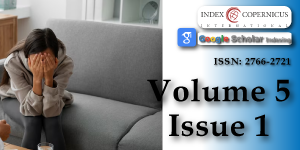Psychotropic drugs prescription block the positive effects of the doctor-patient communication and relationship
Main Article Content
Abstract
The fact that general practitioner (GP) or psychiatrist understands the psychosocial effects of prescribing on the doctor-patient relationship is as important, if not more so, than knowing pharmacology. Any prescription of drugs modifies the doctor-patient relationship. Drugs, especially psychotropic drugs, act on symptoms and change thoughts, feelings, and behaviors; they can create both physical and psychological dependency; they can discourage a deep search for real solutions, both on the part of the doctor and the patient; they can affect the doctor’s access to the patient and the problem will be out of their reach. Psychotropic drugs can make the effect of the doctor in himself as a drug more difficult, favor an insignificant or problematic or little human relational context, where the GP/psychiatrist does not delve into the true meaning of the symptoms, and the patient tends not to get involved, to make an emotional withdrawal, to be passive before the prescribed drug, and can result in the chronification and structuring of functional symptoms that become organic, with lack of cooperation of the doctor and the patient, and paradoxically with over-compliance or therapeutic discontinuity and the lack of pharmacological adherence, absences to appointments or delays or cancellations of visits, and the denial of responsibility of both the doctor and the patient.
Article Details
Copyright (c) 2021 Turabian JL.

This work is licensed under a Creative Commons Attribution 4.0 International License.
Pellegrino ED. The internal morality of clinical medicine: a paradigm for the ethics of the helping and healing professions. J Med Philos. 2001; 26: 559-579. PubMed: https://www.ncbi.nlm.nih.gov/pubmed/11735050.
Pérez Cicili A, Vidaillet Calvo EC, Carnot Pereira J, Duane Machado OJ. The physician-patient relation in the National Health System]. [Article in Spanish]. Rev Cubana Med Gen Integr. 2003; 19. http://scielo.sld.cu/scielo.php?script=sci_arttext&pid=S0864-21252003000600006
Turabian JL. Drug Prescription Modifies the Doctor-Patient Relationship in General Medicine. Arch Fam Med Gen Pract. 2018; 3: 66-69. https://scholars.direct/Articles/family-medicine/afmgp-3-012.pdf
Turabián Fernández JL, Pérez Franco B. The concept of treatment in familiy medicine: A contextualised and contextual map of a city hardly seen]. [Article in Spanish]. Aten Primaria. 2010; 42: 253-254. http://www.elsevier.es/es-revista-atencion-primaria-27-articulo-el-concepto-tratamiento-medicina-familia-S0212656710000259
Turabián Fernández JL, Pérez Franco B. [The Effect of Seeing the Sea for the First Time. An Attempt at Defining the Family Medicine Law: The Interview is Clinical Medicine. Aten Primaria. 2008; 40: 565-6. http://www.elsevier.es/es-revista-atencion-primaria-27-articulo-el-efecto-ver-primera-vez-mar-un-13128570
Turabián Fernández JL, Pérez Franco B. Impact of the induced prescription on the doctor-patient relationship]. [Article in Spanish]. Rev Calid Asist. 2011; 26: 67-69. https://www.elsevier.es/es-revista-revista-calidad-asistencial-256-articulo-impacto-prescripcion-inducida-sobre-relacion-S1134282X10001405
Turabián JL, Pérez Franco B. Community Activities in Family Medicine and Primary Care. Madrid: Díaz de Santos. 2001; https://www.amazon.es/Actividades-comunitarias-medicina-atenci%C3%B3n-primaria/dp/8479784741
Balint M, Hunt J, Joyce D, Marinker M, Woodcock J. Treatment or diagnosis. A study of repeat prescriptions in general practice. London: Tavistock Publications. 1984.
Lucassen P, Olesen F. Context as a drug: some consequences of placebo research for primary care. Scand J Prim Health Care. 2016; 34: 428-433. PubMed: https://www.ncbi.nlm.nih.gov/pmc/articles/PMC5217288/.
Leigh H, Reiser MF. The patient. Biological, psychological, and social dimensions of medical practice. Plenun Medical Book Company. 1992.
Turabian JL. Contextual treatment: a conceptualization and systematization from general medicine. Int J Fam Commun Med. 2018; 2: 97-104. https://pdfs.semanticscholar.org/f1ec/131f2f26d97e931f5494371196b8b7a86ee4.pdf?_ga=2.118895553.955135408.1539260497-203874004.1539260497
Gutiérrez-Islas, Báez-Montiel BB, Turabian JL, Bolaños-Maldonadoa M, Herrera-Ontañón JR, et al. Patients with adverse drug reactions have a higher prevalence of emotional disorders. Aten Primaria. 2012; 44: 720-726. http://www.elsevier.es/es-revista-atencion-primaria-27-articulo-los-pacientes-con-reacciones-adversas-S0212656712003058
Turabian JL, Moreno-Ruiz S. The fable of the pine and the palm tree: the two extremes. Strategies to maximize the placebo effect and minimize the nocebo effect in primary health care. Ment Health Addict Res. 2016; 1: 44-46. https://oatext.com/The-fable-of-the-pine-and-the-palm-tree-the-two-extremes.-Strategies-to-maximize-the-placebo-effect-and-minimize-the-nocebo-effect-in-primary-health-care.php
Hammersley D. Counselling people on prescribed drugs. London: Sage Publications. 1995.
Turabian JL. Doctor-Patient Relationship in Pharmacological Treatment: Discontinuation and Adherence. COJ Rev Res. 2018; 1. https://crimsonpublishers.com/cojrr/pdf/COJRR.000521.pdf
Turabian JL. Interpretation of the Reasons for Consultation: Manifest and Latent Content. the Initiation of the Diagnostic Process in General Medicine. Archives of Community and Family Medicine. 2019; 2. https://www.sryahwapublications.com/archives-of-community-and-family-medicine/pdf/v2-i1/1.pdf
Durif-Bruckert C, Roux P, Rousset H. Medication and the patient-doctor relationship: a qualitative study with patients suffering from fibromyalgia. Health Expect. 2015; 18: 2584-2594. PubMed: https://www.ncbi.nlm.nih.gov/pubmed/24995371.
Turabian JL. The Wrong Transformation of Doctor-Patient Relationship in Drug-Patient Relationship: From the Doctor Himself as A Drug to Doctor as Drug Dealer. Chronicle of Medicine and Surgery. 2018; 3: 298-301. https://scientiaricerca.com/srcoms/SRCOMS-03-00052.php.

